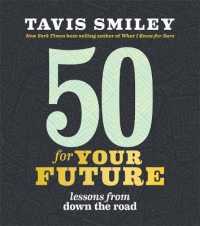- ホーム
- > 洋書
- > 英文書
- > Science / Mathematics
Full Description
This book is intended for anyone, regardless of discipline, who is interested in the use of statistical methods to help obtain scientific explanations or to predict the outcomes of actions, experiments or policies.








